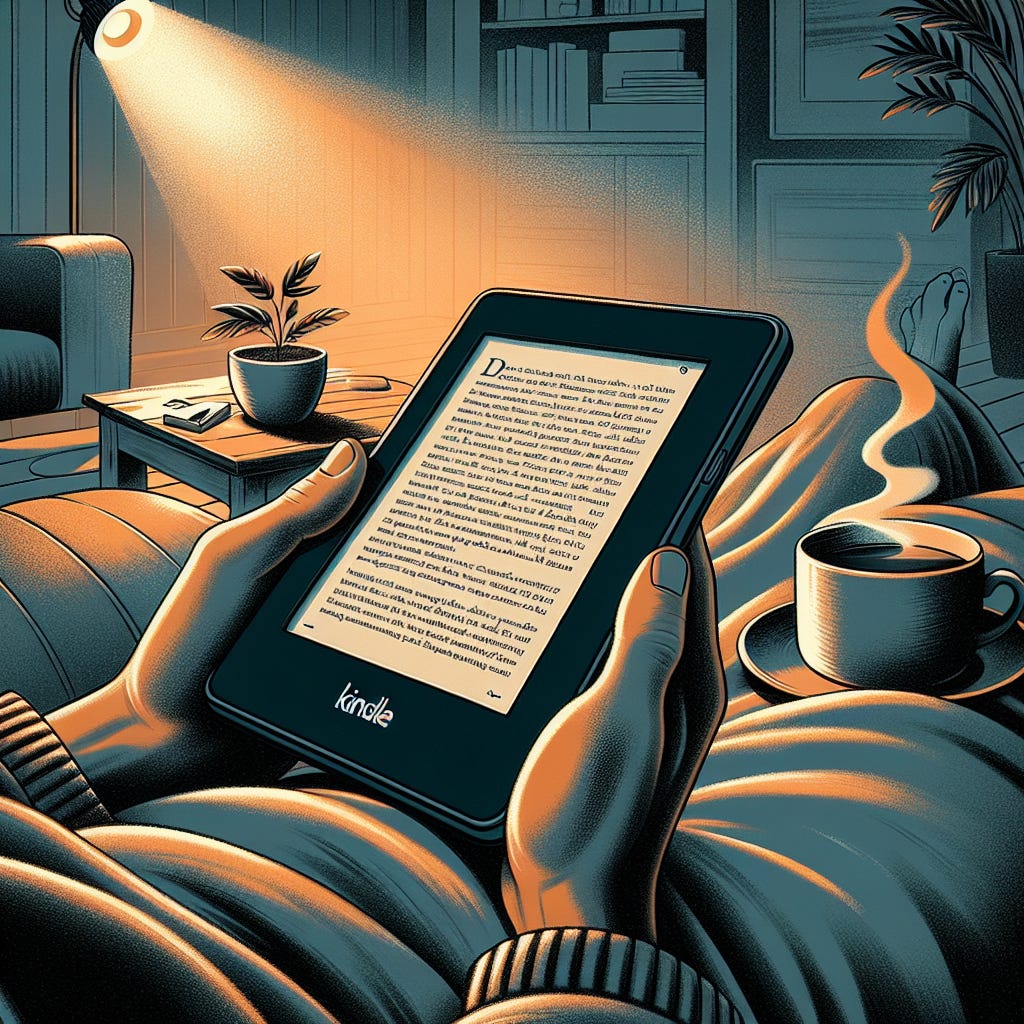Originally published on my blog, kubilayerdogan.net. Cover image generated by DALL·E 3.
I always wanted to be a regular reader who reads at least several books a year, if not a month. I tried ways like setting goals for intrinsic motivation or publishing progress for extrinsic. Over a decade ago, purchasing a Kindle was another step in that direction.
Just like the other things, the Kindle didn't help. Not that I had a problem with the product; I didn't know what to expect from it. Although it took me a while, I finally devised my strategy for being a regular Kindle user. Below, you can find what I discovered along the way.
1. I cannot replace physical books with Kindle
I first looked for the Kindle version whenever I wanted to read a book. I always thought the activity of reading would be much easier that way. This may be true, but it just isn't enough for me. I've realized that I enjoy reading physical books most of the time and don't mind the inconvenience of holding them or rotating their pages.
2. I must keep myself away from distractions, physically
Even when reading something on Kindle, any phone notification or a "quick" Google search can get me away from the current activity for good. I position myself in the farthest corner of the room from any other screen to avoid that. "Just don't look at other screens" doesn't work for me.
3. I must manage my mental capacity wisely
If you are not a native English speaker, an English-to-English dictionary sometimes does more harm than good. Even if you have no problems understanding it, your brain works much more than it would with an English-to-your-language dictionary. Then, reading becomes exhausting and less appealing over time. Using a dictionary in your language significantly reduces this mental overhead. The great thing about Kindle is using multiple dictionaries at a time, so, you can still resort to alternative translations.
These are all about how I think I should use my Kindle. What about what should I use it for?
Contrary to this post, I figured out what before how. As my inbox was flooded with new issues of engineering and leadership newsletters every week, I tried to read my way out of them pertinaciously. This turned out to be a failure on a computer for two main reasons: It didn't feel very healthy for my eyes, and I was keen on dropping reading as soon as I got a distraction. Printing the newsletters wasn't an option either, as it was environmentally questionable and didn't feel sustainable in the long run. That's when I was reminded of my Kindle, laying in some drawer, out of battery for weeks (maybe even months).
So here's what I've been trying for a couple of months: Once or twice a week, I skim through the newsletters in my inbox and send the ones that look interesting to my Kindle. Most of the issues I receive contain lists of other articles, so I need to go through many links, but the whole exercise does not take more than 10-15 minutes.
Successes
Sending to Kindle is somewhat convenient (on an iPad or using the Chrome extension): I share the webpage via the Kindle app/extension, and it appears on the device with a reasonably good layout.
My inbox remains clean and up-to-date.
As I don't keep seeing unread newsletters, I am less anxious about them
Improvement areas
After just a couple of weeks, the content on Kindle is too hard to manage. Using collections helps, but the slow hardware doesn't (I recently discovered that I could organize the collection on my phone, which is in sync with Kindle)
Moving the unread content from my inbox to my Kindle gives a false sense of accomplishment: I must keep reminding myself that I must read what's in my Kindle inbox before there's more.
Layout issues on the output when the source material is enrichened with embedded HTML, like tweets, etc.
Delivery to Kindle part feels less fun every day and is hard to automate
Optimization comes after going from 0 to 1, so I am still evaluating successes and consistency before setting my eyes on things to improve. Thankfully, there's nothing that's not workable.




